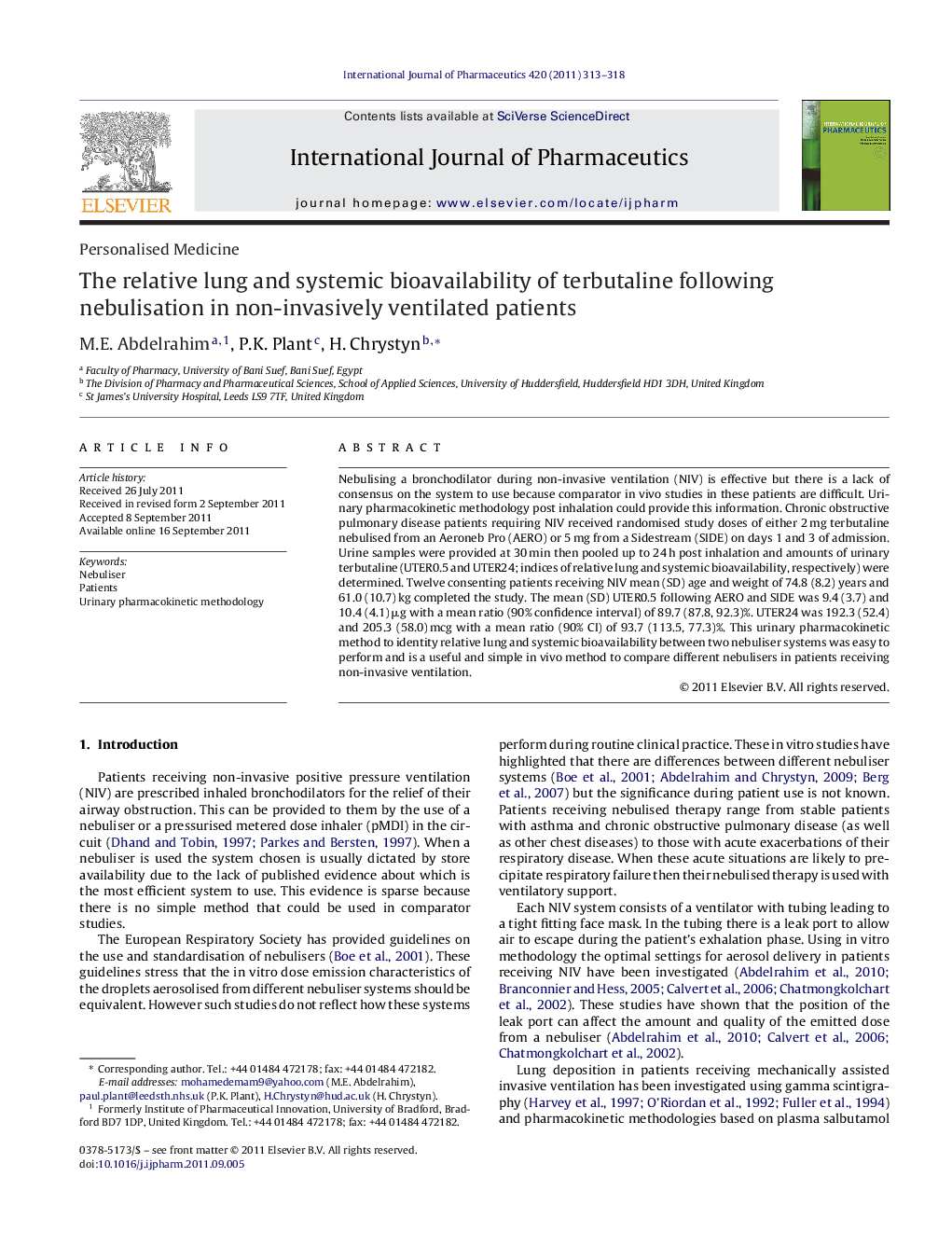| Article ID | Journal | Published Year | Pages | File Type |
|---|---|---|---|---|
| 2502996 | International Journal of Pharmaceutics | 2011 | 6 Pages |
Nebulising a bronchodilator during non-invasive ventilation (NIV) is effective but there is a lack of consensus on the system to use because comparator in vivo studies in these patients are difficult. Urinary pharmacokinetic methodology post inhalation could provide this information. Chronic obstructive pulmonary disease patients requiring NIV received randomised study doses of either 2 mg terbutaline nebulised from an Aeroneb Pro (AERO) or 5 mg from a Sidestream (SIDE) on days 1 and 3 of admission. Urine samples were provided at 30 min then pooled up to 24 h post inhalation and amounts of urinary terbutaline (UTER0.5 and UTER24; indices of relative lung and systemic bioavailability, respectively) were determined. Twelve consenting patients receiving NIV mean (SD) age and weight of 74.8 (8.2) years and 61.0 (10.7) kg completed the study. The mean (SD) UTER0.5 following AERO and SIDE was 9.4 (3.7) and 10.4 (4.1) μg with a mean ratio (90% confidence interval) of 89.7 (87.8, 92.3)%. UTER24 was 192.3 (52.4) and 205.3 (58.0) mcg with a mean ratio (90% CI) of 93.7 (113.5, 77.3)%. This urinary pharmacokinetic method to identity relative lung and systemic bioavailability between two nebuliser systems was easy to perform and is a useful and simple in vivo method to compare different nebulisers in patients receiving non-invasive ventilation.
Graphical abstractFigure optionsDownload full-size imageDownload as PowerPoint slide
